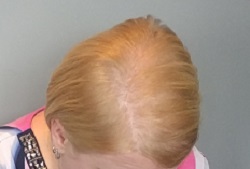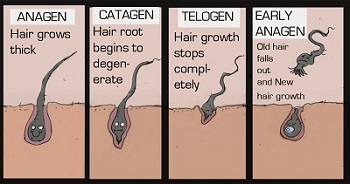Earlier this month, an interesting new study was published in the Experimental Dermatology journal by UK based scientists. The title of this study was “Hair regrowth in male and female pattern hair loss does not involve the conversion of vellus hair to terminal hair“.
Kenogen Hair Follicles
Basically, the scientists found that when medications such as minoxidil, finasteride and anti-androgens were used to treat hair loss patients (both men and women), the resulting hair regrowth was almost entirely attributable to the reactivation of dormant non-vellus hair follicles (termed as “kenogen” hair follicles) rather than the conversion of fine miniaturized vellus hair into thick terminal hair.
This is a very surprising finding. In both male pattern hair loss (MPHL) and female pattern hair loss (FPHL), terminal hair miniaturizes via shorter and shorter growth cycles. Finally becoming vellus almost invisible fine hair. I am pretty certain that it has long been assumed that hair loss medications cause some of these vellus hair to become terminal hair once again. However, this latest study suggests something entirely different by concluding that:
We would propose there is a population of growth restricted (dormant/kenogen) non-vellus hair follicles, which are re-activated by effective medical treatments as an explanation for the increased hair growth observed in FPHL and MPHL. Our findings have a fundamental impact on the pathophysiology of hair changes occurring in patterned hair loss.
Hair Follicle Growth Cycle and Phases
We have all heard of the three main phases of the hair follicle growth cycle in anagen (growth), catagen (transition/regression) and telogen (resting). There is also a lesser known phase called exogen, which is when hair follicles undergo shedding. Also see my post on telogen effluvium.
However, I had never heard of this new kenogen phase before. A basic google search showed that while this phase is almost never mentioned in literature, it was discovered as early as in 2002 when a study titled “Kenogen: A new phase of the hair cycle?” was published in Italy.
I am not sure if just several studies on this are sufficient to make any conclusions, but it is hard to believe that there could be some follicles in a dormant state that were previously unaccounted for and that are being reactivated by hair loss medications.

